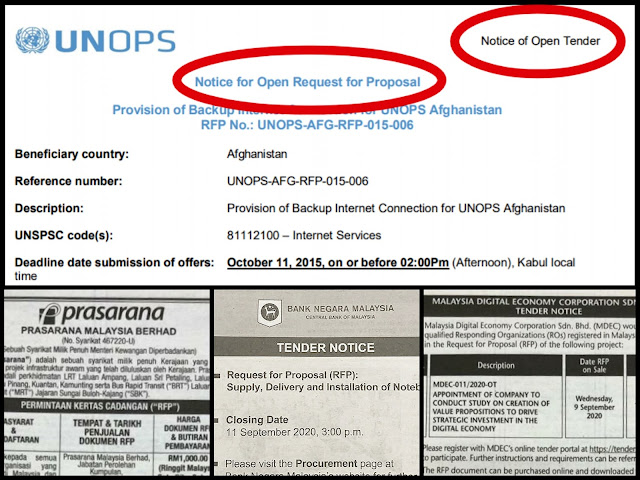Sunday, 20 September 2020
Of direct negotiations and open tenders
The heated exchange over direct-negotiated projects in the recent parliamentary sitting has once again raised question over the status of “request for proposal” (RFP) as an open tender method.
The criticism over the nature of RFP as open tender stemmed from the ignorance of classification of procurement approaches.
Any procurement method subjected to competitive submission of tender is “open”. This is in contrast with procurement that is directly awarded without involving the evaluation of various submitted proposals.
Open tender can be done in several ways, one of which is RFP. To borrow the classification from biology, open tender is genus while request for proposal is species.
The advantages of open RFP include the early identification of risks and benefits of the different proposals. RFP also allows for creativity and pushes for innovative solution.
Bidders can develop their best proposal for the project, while the project owner gets to evaluate the various counter-plans to choose the most suitable one.
RFP is not only a competition for the best price, but more importantly, a battle for the best solution within the stipulated specification.
In other words, RFP is a multidisciplinary procurement process that takes into consideration a range of factors and various aspects (environmental, economic, social, governance) in the decision-making process.
International institutions such as the World Bank, United Nations, Asian Development Bank, and World Health Organization use the RFP as open tender for their procurement need.
Penang was one of the earliest administrations in Malaysia that adopted the open RFP when the method was rarely practised in the public sector. Academician Goh Ban Lee had remarked the adoption was “new thinking” and “very refreshing.”
The Penang Transport Master Plan is one of the projects planned through open RFP. The tender was advertised and the public was invited to bid. A total of 55 local and international companies responded to the RFP, with six submitting their proposal.
Today, various government-linked institutions such as Bank Negara, Prasarana Malaysia Berhad, Malaysia Digital Economy Corporation, and Penang Port Commission are issuing open RFP to invite bidders to submit their proposal.
Not all procurements can be openly tendered. Items that are required in an emergency, copyrighted or specialised cannot be tendered.
Otherwise, the practice of open tender should be required for public infrastructure projects as much as possible in order to obtain the best solution for the people.
